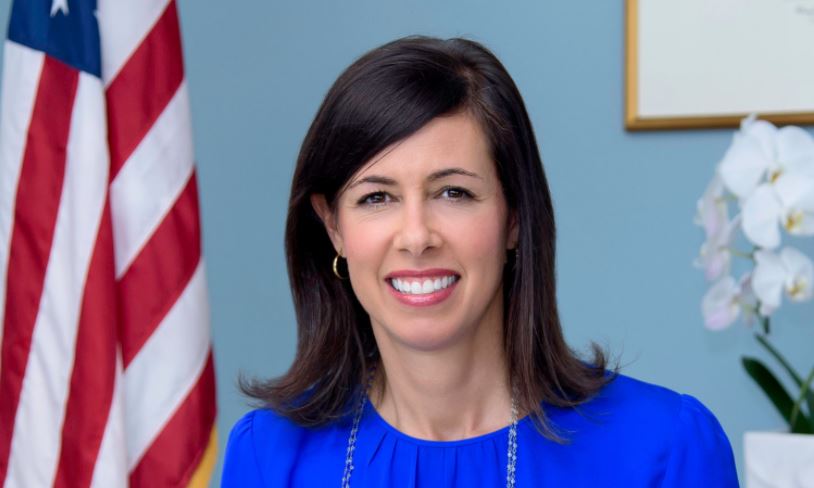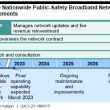Rosenworcel says FCC will consider receiver NOI in April
FCC Chairwoman Jessica Rosenworcel this week announced plans for the agency to launch a proceeding in April that would explore rules regarding radio receivers—not just transmitters, as is currently done—to ensure modern spectrum schemes are effective, as opposed to the ongoing C-band debate regarding aviation and 5G deployments.
“In the past, our discussions of spectrum efficiency have been a one-way effort—they have focused almost exclusively on transmitters,” Rosenworcel said in prepared remarks delivered during a keynote at MWC 2022 in Barcelona that were released by the FCC. “But here’s the thing: Wireless communications only exists when transmitters are connected to receivers. Both are vital. Both matter. And going forward, policymakers need to consider both transmitting and receiving. Not just the former at the expense of the latter.
“Next month, I will propose to my colleagues at the FCC that we launch a new inquiry to explore receiver performance and standards.”
Rosenworcel emphasized the potential for communications to “move lightyears beyond the smartphone” via connected sensor technologies and associated computing processing advancement. But such innovation depends upon access to spectrum, which is increasingly more difficult to find, she said.
“We face a hard truth,” Rosenworcel said. “Greenfield spectrum—open and cleared for use—will not be as simple or easy to find. We will have to invest in new technologies to promote efficiency and use a range of spectrum policy tools, including shared access, priority and preemption, lightweight leasing, and dynamic database coordination to ensure access to our airwaves.”
All of these approaches can work, but some spectrum-efficiency efforts have been undermined by existing devices that have receivers with little or no filtering, so they “hear” signals outside of their prescribed frequencies of operation. These signal conflicts degrade the effectiveness of the existing device, even though the problematic transmission is not traditional interference, because the transmission does not impede on the existing devices prescribed operational airwaves.
Attention to this issue has been highlighted recently with 5G deployments on C-band spectrum. Wireless carriers like Verizon and AT&T paid a total of $81 billion during an FCC auction to purchase the C-band licenses, and initially planned to deploy 5G on the airwaves in December. But the FAA expressed concerns that the 5G deployments would result in erroneous altimeters readings that could result in airplanes crashing, and the carriers altered their 5G rollouts in an effort to mitigate safety fears for most commercial flights.
During a recent House subcommittee hearing, lawmakers focused primarily on the lack of coordination between the FAA, NTIA and FCC. However, the issue causing the problem is that some older airplane altimeters have receivers that lack filtering, meaning they can “hear” signals well outside the 4.2-4.4 GHz band where altimeter transmissions operate, according to testimony from Roberson and Associates CEO Dennis Roberson.
During his testimony, Roberson noted that the question whether the FCC should have rules governing receivers has been debated for 40 years, but the agency has limited its regulations to transmission issues to date.
Rosenworcel did not cite the aviation-safety issue specifically, but FCC Commissioner Nathan Simington did in his prepared statement welcoming Rosenworcel’s announcement of an upcoming receiver proceeding.
“I applaud Chairwoman Rosenworcel’s decision to consider exploring a new regulatory framework for commercial spectrum allocations,” Simington said. “An approach that looks at both the receiver and transmitter ends of the equation is the only framework truly capable of timely accommodating the interests of federal users of spectrum, and other incumbents. We see a lot of value in getting to a place where conflicts such as the C-Band altimeter fight are headed off at the pass.
“This model will provide all interested parties sufficient advanced warning about problematic band edges adjacent to any new commercial spectrum. Clear rights regarding interference protection can provide incentives for innovation and collaboration among spectrum users in a way that avoids regulatory dictate.”
During her MWC 2022 speech, Rosenworcel thanked Simington for his leadership on these issues.
Rosenworcel also outlined some of the key concepts that she expects to be included in the NOI next month.
“This inquiry would ask how receiver improvements could provide greater opportunities for access to spectrum,” Rosenworcel said. “It would explore how these specifications could come in the form of incentives, guidelines, or regulatory requirements—in specific frequency bands or across all bands. And it would seek comment on legal authority and market-based mechanisms that could help create a more transparent and predictable radiofrequency environment for all spectrum users—new and old.”


















Spare us further government interventions, the FCC has made a spectacular mess of the electro-magnetic spectrum with its insistence on day late dollar short regulation and control. 5G and the FAA ring a bell? Navigating their nonsensical changes to everything under the sun is frustrating and wasteful. I can’t even get their Enforcement Bureau to investigate interference complaints. Sure, just what we need, government stooges causing more problems. When will government get the message? Government is the problem.
Well, there are *are* standards that regulate receivers, radar altimeter receivers, as is the case with 5G and the current controversy. It is covered in ITU regulations, found here:
https://www.itu.int/dms_pubrec/itu-r/rec/m/R-REC-M.2059-0-201402-I!!PDF-E.pdf
On page 21 is the section titled: “RF selectivity for radio altimeters”
Now, are these ‘standards inadequate? That is the sixty-four thousand dollar question …